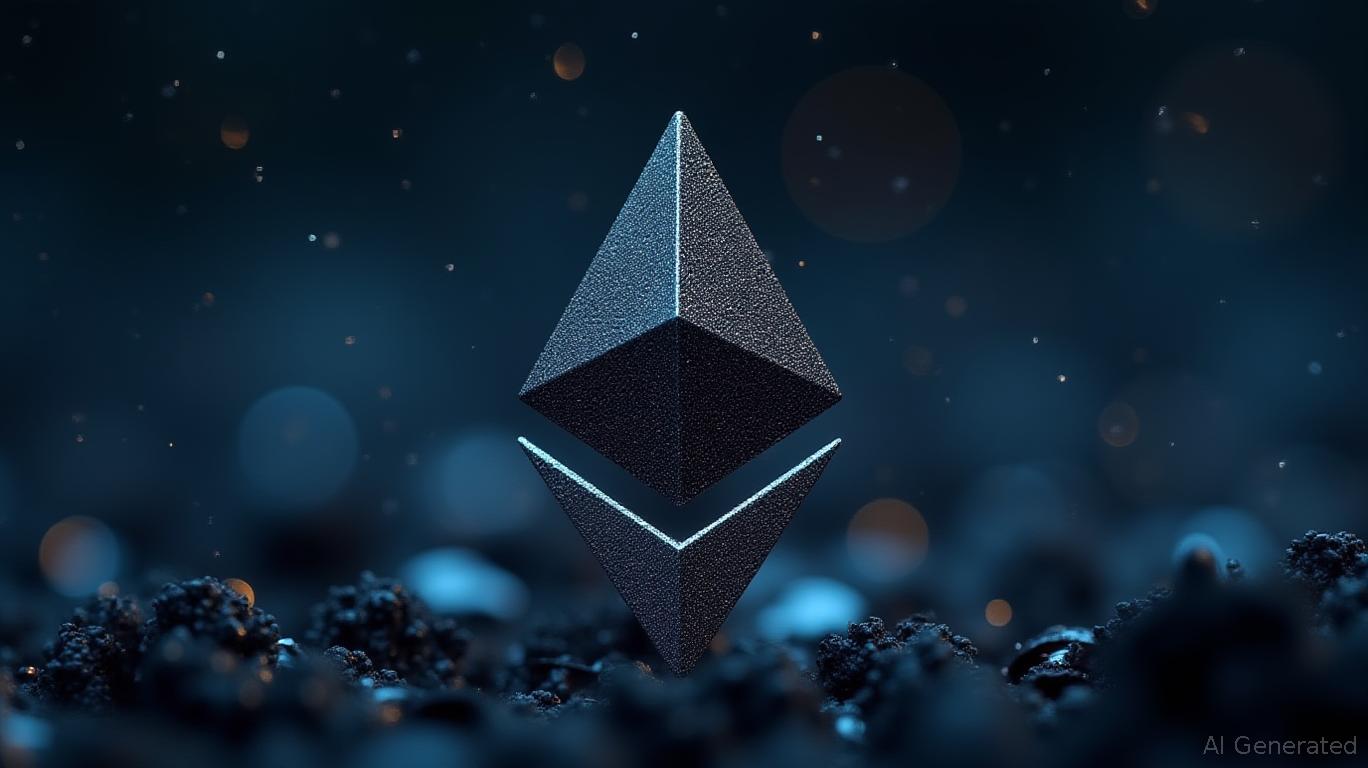Ethereum’s Fusaka Update: Advancing Scalability for a Rollup-Driven Tomorrow
- Ethereum's 2025 Fusaka upgrade introduces PeerDAS (EIP-7594) to boost scalability by reducing L2 transaction costs through partial blob data verification. - The upgrade aims to increase blob capacity from 6-9 to 48 per block without compromising decentralization, benefiting L2 platforms like Arbitrum and Optimism. - PeerDAS enables statistical sampling of blob data, lowering bandwidth demands while addressing L2 economic bottlenecks and potentially driving dApp adoption. - Testing phases (Devnet-3 to Dev

The Fusaka upgrade for Ethereum, anticipated for release in late 2025, is designed to boost scalability and lower Layer 2 (L2) transaction expenses by introducing PeerDAS (Peer Data Availability Sampling), which is central to
This upgrade is set to benefit L2 solutions like
The timeline for Fusaka depends on successful testing. Developers have recently finished non-finality testing on Fusaka Devnet-3 and are moving forward to Devnet-5, which will focus on improving blob data management and validator performance title3 [ 3 ]. Although the upgrade is planned for November or December 2025, past delays in Ethereum’s upgrade history remain a concern. For example, the Pectra upgrade faced several postponements after initial setbacks in 2024 title1 [ 1 ]. Despite these obstacles, the Ethereum community is cautiously optimistic, with Christine Kim from Galaxy emphasizing that the structured testing process favors stability over speed title3 [ 3 ].
Fusaka’s impact goes beyond technical enhancements. By improving data availability and lowering L2 expenses, the upgrade could bolster Ethereum’s standing against rival smart contract platforms and encourage broader adoption of decentralized applications (dApps), DeFi services, and NFT markets title3 [ 3 ]. Experts also believe that increased throughput and reduced fees may attract more developers to build on Ethereum, reinforcing its position as the settlement layer in a rollup-focused ecosystem title6 [ 6 ]. Institutional validators, in particular, could see operational costs drop, potentially drawing new participants to the network title1 [ 1 ].
Nevertheless, integrating PeerDAS brings new challenges. For instance, block proposers must apply erasure coding to blobs and create cryptographic proofs within strict timeframes, which could raise hardware demands for individual stakers. Moreover, since the system relies on distributed data sampling, the network’s security hinges on having enough active nodes—a risk Ethereum’s developers are addressing with incentive strategies title6 [ 6 ]. Even with these hurdles, the Ethereum Foundation and core development team remain dedicated to ongoing testing and refinement, aiming to ensure the upgrade supports the network’s long-term scalability objectives.
Disclaimer: The content of this article solely reflects the author's opinion and does not represent the platform in any capacity. This article is not intended to serve as a reference for making investment decisions.
You may also like
Switzerland Delays Crypto Information Exchange Pending International Coordination
- Switzerland delays crypto tax data sharing with foreign nations until 2027, citing unresolved CARF partner agreements. - The OECD's 2022 framework requires member states to exchange crypto account details, but 75 countries including the EU and UK face implementation challenges. - Transitional measures ease compliance burdens for Swiss crypto firms while awaiting finalized international data-sharing protocols. - Major economies like the U.S., China, and Saudi Arabia remain outside CARF due to non-complian

Bitcoin Updates: SGX Addresses Offshore Perp Shortfall as Bitcoin Decline Increases Demand for Hedging
- SGX launched Bitcoin and Ethereum perpetual futures, becoming a first-mover in regulated onshore crypto derivatives to meet institutional demand. - The $187B/year perp market, dominated by Asia, now gains a regulated alternative to offshore platforms with SGX's 22.5-hour trading window. - Perps enable hedging during Bitcoin's 2025 downturn, with SGX's margin-call system prioritizing investor protection over instant liquidations. - Regulatory caution limits access to accredited investors, aligning with gl

Bitcoin News Update: Institutional ETF Adjustments Challenge Key Bitcoin Support Thresholds
- Analysts warn Bitcoin faces 25% drop risk if key support levels fail amid shifting institutional ETF dynamics. - Texas's $5M IBIT purchase highlights growing government interest, but ETFs fall short of direct BTC ownership criteria. - Technical analysis shows Bitcoin trapped in a broadening wedge pattern, with breakdown below $80,000 risking $53k decline. - Institutional rebalancing sees $66M IBIT outflows vs. $171M FBTC inflows, signaling tactical ETF rotation over accumulation. - Abu Dhabi's $238M ETF

XRP News Today: IMF Cautions That Rapid Tokenized Markets Could Intensify Crashes in the Absence of Regulation
- IMF warned tokenized markets like XRP could worsen flash crashes without regulation, citing risks from decentralized systems lacking traditional safeguards. - Report acknowledged tokenization's potential to cut cross-border payment costs but highlighted volatility risks from rapid liquidity loss seen in crypto markets. - SEC's approval of crypto ETFs signals growing institutional acceptance, though regulators emphasize oversight frameworks to mitigate systemic risks. - IMF proposed a global digital marke
